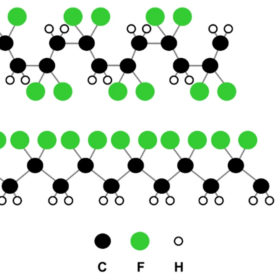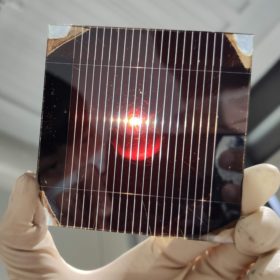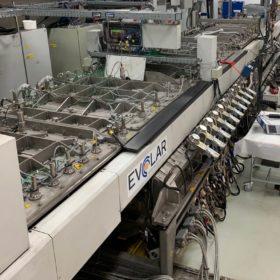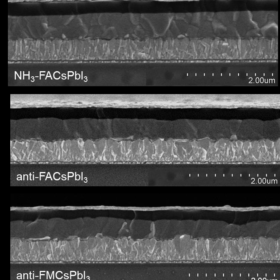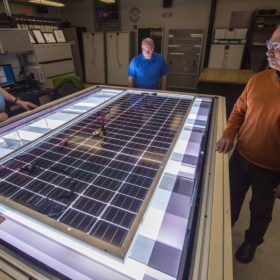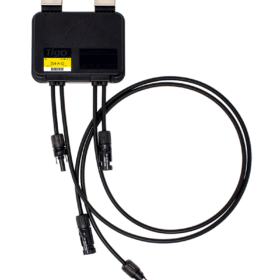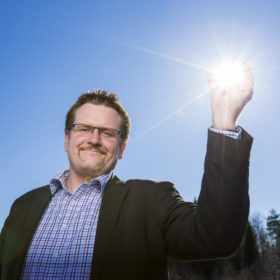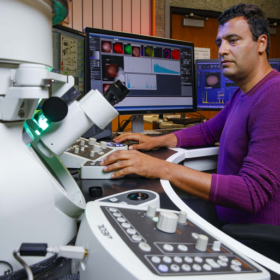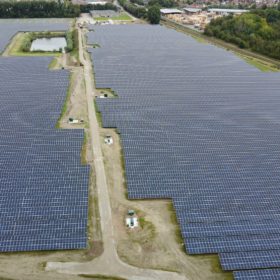Putting polyvinylidene-fluoride backsheets to the test
US scientists tested PV modules built with backsheets and polyvinylidene-fluoride (PVDF) layers, to replicate the degradation the material has suffered in the field of accelerated testing. By exposing the modules to multiple stresses, they were able to cause degradation in the backsheet materials. Though this did not closely match what has been seen in the field, such testing can be useful in identifying potential weaknesses.
Controlling the crystals for a 17.96% efficient perovskite solar cell
Scientists in Taiwan demonstrated a new way to produce high-purity lead-iodide, as a precursor material for a perovskite solar cell. By using temperature to better control the orientation of crystals, the group was able to show much higher efficiencies when the precursor was used to fabricate a perovskite layer and subsequently a working solar cell.
Evolar claims 25-year stability for perovskite cells
Evolar, a Swedish manufacturing startup, has put its perovskite cell technology through industry-standard accelerated reliability testing. It said its results show that the cells would likely remain stable for more than 25 years in the field.
Healing defects with ammonia for a 23.21% efficient perovskite solar cell
Scientists in China demonstrated a process to “heal” defects in a perovskite film by using an ammonia treatment after the film is formed through a solvent process. Small solar cells made using these films achieved maximum efficiency of 23.21%, while a mini-module with a 14-square-centimeter active surface area reached 20.61%.
Monitoring degradation for 13 module types
In a study that began in 2016, US scientists purchased 834 PV modules, representing seven manufacturers and 13 module types, and installed them in various climate conditions to observe their performance over time. The results show that, while plenty of opportunities still exist to extend module lifetimes and reduce performance loss in the field, reductions in the manufacturing cost of PV have not come with an increase in their degradation rate.
Huge opportunity for module-level power electronics
A new report form analysts at IHS Markit notes that the market for module-level power electronics (MLPE) grew by 33% between 2019 and 2021, with around one-third of new residential solar installations now taking advantage of MLPE’s promise of improved safety, energy yield and fault detection. And with smaller, distributed generation systems expected to represent 43% of global PV installations between now and 2025, the opportunity for MLPE will only get larger.
Gallium doping keeps p-type in the frame
Scientists at Germany’s Fraunhofer Institute for Solar Energy Systems (ISE) have investigated gallium-doping in p-type silicon wafers as a route to better performance. Testing these specially produced p-type wafers in TOPCon and heterojunction cell architectures, which several major PV cell manufacturers are gearing up to produce on more expensive n-type wafers, the scientists found that with gallium doping, the p-type wafers can achieve similar or even better cell efficiencies compared to those made so far with n-type wafers.
Growing consensus on 100% renewables
An international group of researchers from 15 universities has said that there is growing consensus among scientists that an energy system based on 100% renewables could be achieved cost effectively by 2050.
The problem with aqueous zinc batteries
US scientists studied a zinc-manganese dioxide battery and found that hydrogen, rather than zinc-ions, move back into the manganese cathode, damaging its structure. The researchers will be able to use this knowledge to pursue new ways to improve its performance.
Shell to purchase 100 MW UK portfolio from Anesco
Shell will purchase four planned PV projects totaling 100 MW in various locations across northern England. It says it will seek offtakers for the projects through its power trading team and sees strong demand in the corporate power purchase agreement sector.

